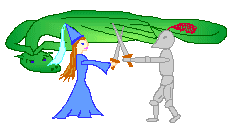Fencing 101
The sport of fencing is fast and athletic. It is a very far cry from the choreographed bouts you see on film or on the stage. Instead of swinging from a chandelier or leaping off from balconies, you will see two skilled fencers moving back and forth on a 6-feetby 44-feet strip. The action is so fast the touches are scored electronically.
History

Swordplay has been practiced for thousands of years, as evidenced by carvings depicting fencers found in a temple near Luxor dating from around 1190 BC.
Fencing began the move from a form of military training to a sport in either the 14th or 15th century. Both Italy and Germany lay claim to its origins, with German fencing masters organizing the first guilds in the 15th century, the most notable being the Marxbruder of Frankfurt, formed in 1478.
Olympic History

Fencing was included for the first time at the 1896 Games in Athens, and has remained on the Olympic programme since then. The women’s fencing competition entered the Games in 1924 in Paris. Today, men and women compete in individual and team events, in which three types of weapon are used: foil, epee and sabre. The foil was, at first, the only weapon used by women, until the 1996 Games in Atlanta, when women’s epee was introduced. Women’s sabre appeared for the first time on the Olympic programme in Athens in 2004.
The Fitness Benefits of Fencing
Physical benefits of fencing:
Coordination
Agility
Balance
Flexibility
Strength
Cardiovascular Endurance
Mental benefits of fencing:
Focus
Hand-eye coordination
Problem solving

“Fencing is an excellent sport to improve lower body strength and speed, as well as hand-eye coordination"

The Weapons

Foil, epee and saber are the three weapons used in the sport of fencing. While some fencers compete in all three events, the elite generally choose to focus their energies on mastering one weapon.The foil is a descendant of the light court sword formerly usedby nobility to train for duels. It has a flexible, rectangular blade approximately 35 inches in length and weighing less than one pound. Points are scored with the tip of the blade and must landon valid targets: torso from shoulders to groin in the front and tothe waist in the back. The arms, neck, head and legs are considered off-target. Hits to this non-valid target temporarily halts the fencing action, but does not result any points being awarded.The saber is the modern version of the slashing cavalry sword.The epee (literally meaning "sword" in French) is the descendantof the dueling sword.
Foil Fencing
In foil the valid target area includes the torso (including the lower part of the bib of the mask) and the groin. The head, arms, and legs are considered off target. Touches made off target do not count for points, but do stop play. The foil is used as a thrusting (or point) weapon only. Any contact with the side of the blade (a slap or slash) does not result in a score.
Priority (or right of way) Further information: Priority (fencing) Foil is a conventional weapon and so is governed by the rules of priority, also known as right of way. As such, points are not necessarily awarded to the first fencer to hit, but to the fencer who hits with priority. Priority is established when one fencer starts a correctly executed attack. An attack which has failed (i.e. has missed or been parried) no longer holds priority. Priority does not automatically pass to the defending fencer, unless the defending fencer parries, at which point priority is given to the defending fencer. Otherwise, at the moment an attack is over, neither fencer has priority. Instead, priority is gained by a fencer making an offensive action, as is always the case. If the attack was parried, the defender has the right to make a riposte, but it must be initiated without indecision or delay. In other words if the defending fencer parries successfully, but then waits and does not immediately riposte, they lose the right of way. Alternatively, he may initiate his own attack if the initial attack missed. The fencer making the original attack may also make a new offensive action, a renewal or remise of the initial attack. In foil only actions that arrive with priority are considered, unless only one fencer actually hits. Then priority does not matter; the fencer who touched is awarded the point. If the fencer with priority hits off target and the fencer without priority hits on target, then no point is awarded. If both fencers hit on target but one had priority and the other did not, the fencer who had priority is awarded the point.


The Bout

Competitors win a fencing bout by being the first to score 15 points (in direct elimination play) or 5 points (in preliminary pool play) against their opponent, or by having a higher score than their opponent when the time limit expires. Each time a fencer lands a valid hit - a touch - on their opponent, she receives one point. The time limit for direct elimination matches is nine minutes - three three-minute periods with a one-minute break between each. Fencing at the Olympic Games will feature a single-elimination table format, much like that used in Tennis. There will be no preliminary rounds, as the initial seeding into the table will be determined by World Rankings.
Sources: Out of Nowhere Fencing, About.com





